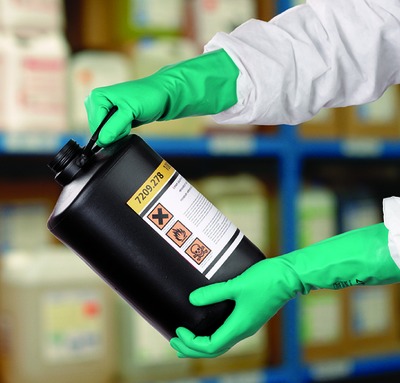Importance of protection against epoxy resins
Monday, 23 January, 2012
Workers in the construction and painting industries are exposed to epoxy resins on a regular basis, yet few are adequately protected.
Occupational skin disease ranks as the most common occupational disease in many countries around the world, with ‘contact dermatitis’ accounting for 90-95% of all occupational skin diseases.
Epoxy resins are known to be a major cause of occupational skin disease and put the user at a high risk of contact dermatitis. Most allergic contact dermatitis related to epoxy resin is localised to the hands and forearms. Contaminated hands can also spread the allergen to previously unexposed sites.
In a 2003 study of occupational dermatitis, epoxy resins were found to be the most important relevant allergen in painter groups, and the second most common relevant allergen in the construction industry. The three most commonly affected occupations were floor finishers, process workers and spray painters.
Within these applications, it was found that gloves were used by only 67.4% of workers. Furthermore, none of the gloves used gave the wearer adequate protection against epoxy resins.

The characteristics of epoxy resins have led to their extensive use in adhesives, paints, coatings, sealants, fillers, concrete repair, reinforced polymer composites, varnishes, product finishing and laminates.
These materials are widely used in the building and construction, printing, publishing and painting industries. Occupational dermatitis causes widespread injury-related costs, including lost time, falls in productivity, employee morale and profitability.
Ansell, in conjunction with an independent German laboratory, has conducted glove permeation tests for protection against epoxy resins. The chemical resistance performance was measured on eight chemical gloves against five commonly used epoxy resins.
The results revealed that the Sol-Vex glove showed no signs of permeation after eight hours’ contact with the epoxy resin, making it a good choice for this application. The glove is available in a range of options that include varying lengths, thicknesses, grip patterns and other variants.
Gloves made out of neoprene, natural rubber or vinyl were not recommended for protection against epoxies.
2024 Review of the Dust Diseases Scheme — final report
In New South Wales, the final report of the Standing Committee on Law and Justice's 2024...
Could this trial bring us closer to a viable silicosis treatment?
Researchers from The Alfred are embarking on a trial of a medication that, they believe, could...
The rising cost of extreme-temperature injuries
To understand the cost of worker exposure to heat and cold, Australian researchers have analysed...







